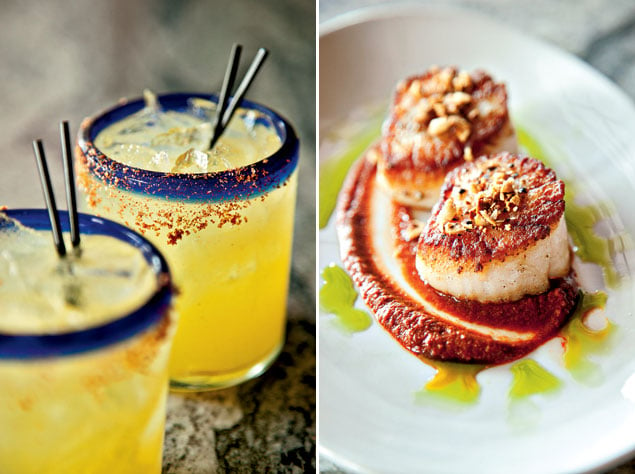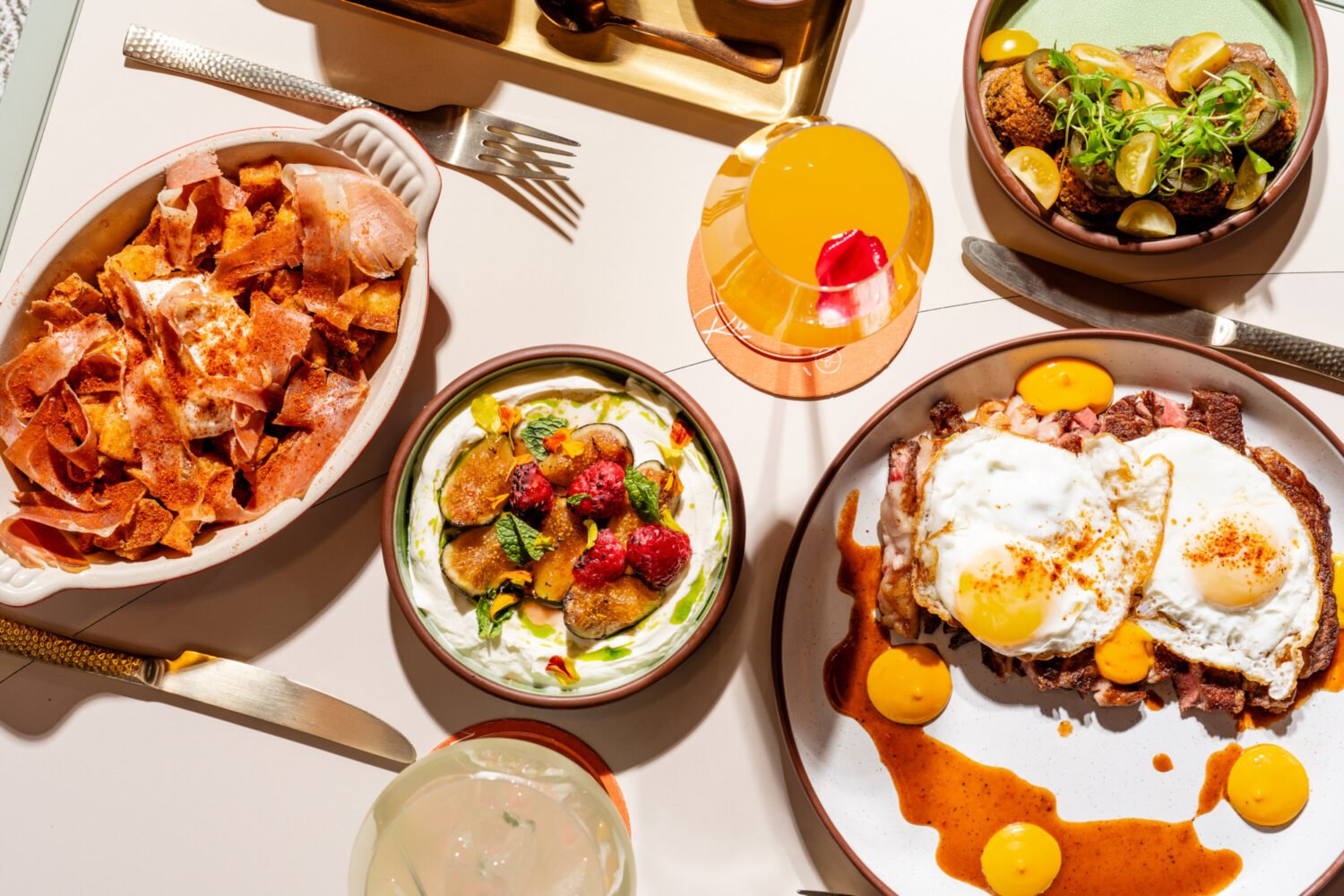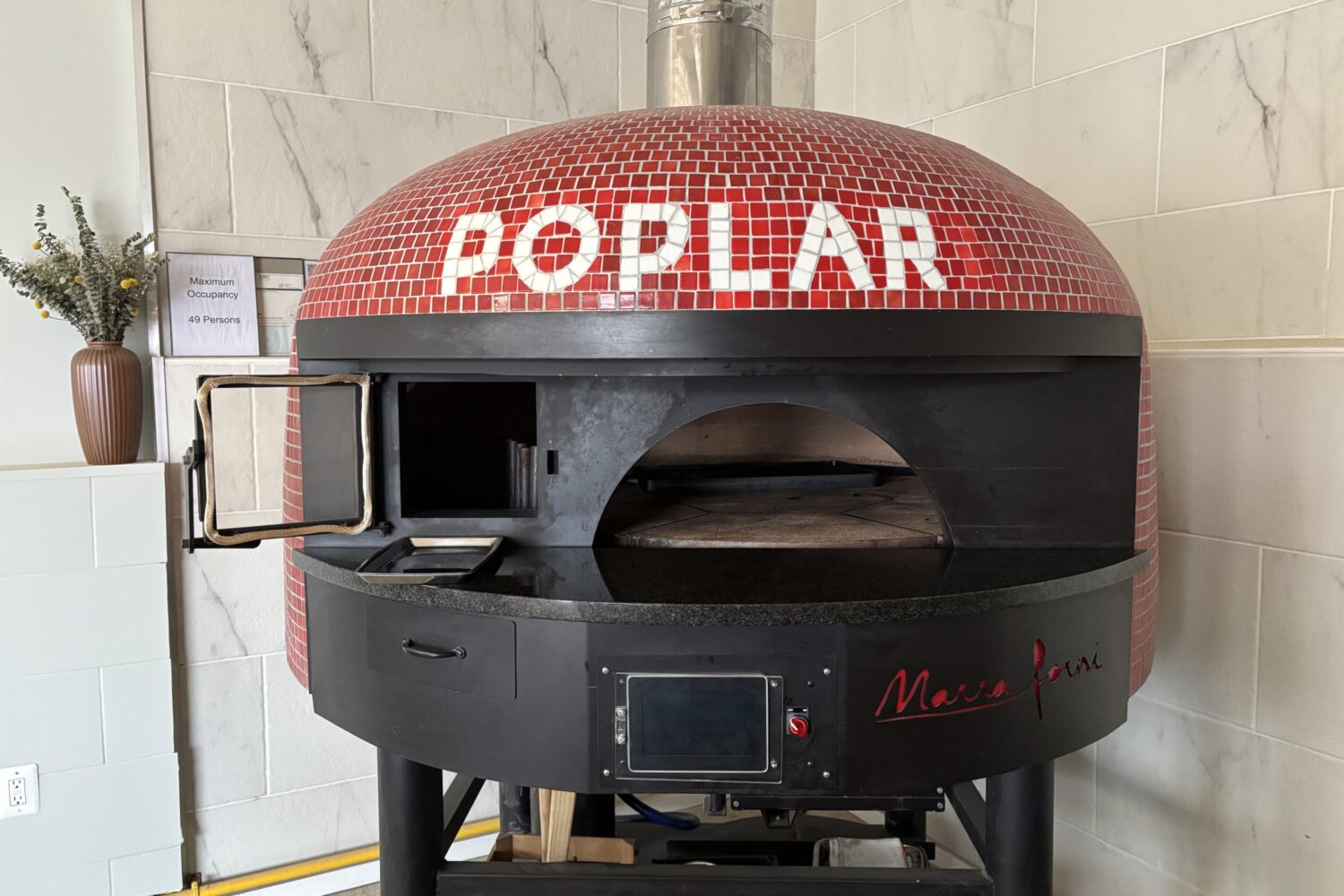Slideshow: The Dishes at Alegria
Patrick Bazin, who turns out plates of crab rémoulade and sea
bass with tamari-ginger sauce at his Modern American dining room, Bazin’s
on Church, isn’t the first guy you’d expect to be behind one of the area’s
best Mexican kitchens.
The chef worked the stoves at the late Red Sage for two years,
but beyond that, his knowledge of Mexican cuisine comes from Diana Kennedy
books, YouTube cooking demos, and lots of trips to Rick Bayless’s Frontera
Grill in Chicago (“probably 75 to 100,” he says).
But you wouldn’t know that from tasting the delicious duo of
salsas—an earthy roasted tomato and a spritely tomatillo and lime—that
come to the table at Bazin’s three-month-old Alegria, housed in a former
wine cellar adjoining his namesake restaurant. Or the terrific mole
poblano, a sauce made with 27 ingredients and finished with
chocolate, that drapes tender chicken thighs. The cooking comes across as
more grandmotherly than dilettantish.
Filling as the salsa and fresh chips are, you’ll want to start
with a molcajete of guacamole, which blows away its more expensive
competition at trendier restaurants in downtown DC. Supplement that with a
skillet of queso fundido—melted Chihuahua cheese blanketing
onions, chilies, and Mexican oregano (better than the bland chorizo
version).
Bazin gets creative with tacos, often to excellent ends. The
star is a corn tortilla filled with tempura-fried cod and accented with
pickled jalapeño and lime-spritzed cabbage. The combination is fairly
traditional Baja style, but the acid-heavy slaw makes it taste more like
an homage to fish and chips than something you’d find in a SoCal taco
truck. A portobello taco—the mushrooms are roasted with balsamic
vinegar—gets crunch from pumpkin seeds. And shreds of pork shoulder cooked
in pork and duck fats are livened up with pineapple and pickled
jalapeños.
The rest of the menu is made up of erratically sized small
plates. A trio of weak-flavored ceviches comes in tiny portions, while a
plate of whole potatoes drowning in bitter mole could feed
four—if it didn’t taste like punishment. The good news is that the larger
portions also extend to some of the best dishes—skirt steak marinated in
soy and ancho chili, and short-rib enchiladas.
Alegria’s chief drawbacks are outside the kitchen. Cocktails
can be well balanced (pineapple margarita) or undrinkably sweet (sangría).
The low-lit, brick-walled space is pretty but gratingly loud, especially
when you’re surrounded by tequila-fueled thirtysomethings. Four inches of
foam behind the brocade wall coverings aren’t enough to help.
But the biggest problem is the small-plates format. “Dishes
will come out as the kitchen makes them,” the waitress says. “All at once”
would have been more accurate. Each night I ate there, I encountered a
logjam of food runners, who stood awkwardly with more plates as we
scrambled to make room on the table, often giving up dishes we weren’t
done with.
It’s not a system that lets you leave stress behind or enjoy
leisurely catch-ups. Order ten small plates and you’ll likely be done in
an hour. That’s a shame, because cooking this good deserves time to be
savored.
This article appears in the July 2012 issue of The Washingtonian.













